 May 26, 2016 John E. Ross, KD8IDJ, Editor
| ||||||||
ARRL Headquarters is Closed on Memorial Day, Monday, May 30: ARRL Headquarters will be closed Monday, May 30, in observance of Memorial Day. There will be no W1AW code practice or bulletin transmissions that day. ARRL Headquarters will reopen Tuesday, May 31, at 8 AM (EDT). We wish everyone a safe and enjoyable holiday weekend! Hamvention® 2016 Youth Activities a Hit -- and HF Too! Hamvention® 2016 had a lot to offer the next generation of radio amateurs. ARRL's first Youth Rally on Saturday, May 21, attracted a full house of attendees, and some Hamvention visitors observed that younger radio amateurs and potential licensees seemed in greater profusion this year than in the past. Guiding the day-long Youth Rally activities were ARRL volunteer educator Tommy Gober, N5DUX, and his wife Jennifer, KE5LNK. Tommy Gober said the Youth Rally fed off energy generated during the earlier Hamvention Youth Forum, led for the 29th year by Carole Perry, WB2MGP, and featuring such young speakers as 17-year-olds Maria Lysandrou, KD9BUS, and Kelsey Seymour, K3LSY, speaking on a range of topics.
"ARRL Youth Rally participants heard from other hams [at the Youth Forum] discussing how to get others involved and the various operating experiences they've had," Tommy Gober said. Youth Rally participants ranged in age from 11 to 26. They also got to sample other ARRL EXPO offerings, including opportunities to see Amateur Radio up close, and even to get directly involved in operating. "ARRL Media and Public Relations Manager Sean Kutzko, KX9X, shared the fun of this year's ARRL National Parks on the Air (NPOTA) initiative," Tommy Gober said. "Sean showed how even those with Technician licenses can activate a national park with a dipole in a tree and a simple digital setup using a tablet, sound card interface, and HF radio." He said members of the group were able to make a 10 meter SSB contact when Youth Rally activities took to the open air outside Hara Arena for a backpack radio demonstration.
Afterward, Youth Rally attendees headed back to ARRL EXPO, where Gerry Hull, W1VE, headed up the "Discover the HF Experience" demonstration. There, well-equipped remotely operated stations in the US and in Sweden provided young operators with a chance to do some real radio. "Several youth made their first Amateur Radio contacts from this experience, while others enjoyed working HF -- many for the first time," Tommy Gober said. Hull said that while the "Discover HF" demo was a huge hit, radio conditions failed to cooperate with the venture over Hamvention weekend. "Despite that, we had a lot of interest from both young and older hams," he said. Young Amateur Extra op Eric Edstrom, KC9SRB, got on the air via SK3W in Sweden to make his first HF contacts with stations in Asia, Europe, and the US. "We certainly opened his eyes," Hull allowed.
Youth Rally attendees also worked on a hands-on electromagnetic buzzer construction project to teach circuit basics, oscillation, and elementary building techniques. ARRL Contest Advisory Committee Chair George Wagner, K5KG, met with Youth Rally participants during their lunch break to pitch participation in the Youth in Amateur Radiosport Survey. "I spoke with them about the Youth Survey and why it was important for them to take it," Wagner said. He and Glenn Johnson, W0GJ, handed out promotional survey cards at Hamvention, some 300 in all. "We are getting a good response to the survey," Wagner said. "Currently, we have in excess of 800 responses. I am seeing some interesting trends." The survey ends on August 31. New ARRL CEO Tom Gallagher, NY2RF, also joined the lunch to learn how ARRL can better serve young people in Amateur Radio and offer opportunities that appeal to them. During a presentation, newly minted Virginia Tech PhD (electrical engineering) Nathaniel Frissell, W2NAF, shared his experiences of operating from Antarctica and other remote locations and highlighted how Amateur Radio served as a foundation for his career path.
"It was busy. Really busy," Gallagher said afterward of his first-ever Hamvention experience, noting that he'd covered a lot of ground over the weekend. "There were a lot of young people there, and we had a really good Youth Rally." Gallagher and new ARRL President Rick Roderick, K5UR, greeted many Hamvention visitors over the weekend. At the ARRL Member Forum, Gallagher stressed his focus on improved ARRL Headquarters service. The Dayton Amateur Radio Club (DARA) presented ARRL Development Manager Lauren Clarke, KB1YDD, and President Roderick with $5000 to fund the ARRL Teachers Institute, and $5000 for the DARA scholarship administered by the ARRL Foundation. DARA also made a $10,000 payment toward its $100,000 Second Century Campaign pledge. At the Youth Forum, Yasme Foundation President Ward Silver, N0AX, presented Carole Perry with the Yasme Excellence Award for her work with youth. ARRL "Strongly Supports" Petition to Drop 15 dB Restriction for Amateur Amplifiers In comments filed on May 26, the ARRL said it "strongly supports" a petition to the FCC seeking to eliminate an Amateur Service rule, spelled out in §97.317(a)(2), that amateur amplifiers not be able to boost the RF input signal by more than 15 dB. The Petition for Rule Making (RM-11767), was submitted in April on behalf of an amateur amplifier distributor, Expert Linears America LLC of Magnolia, Texas.
The 15 dB provision came into the rules during an era when the FCC initiated various actions to rein in a major interference problem resulting from the use of illegal 11 meter amplifiers during the Citizens Band radio boom of the 1970s. "In its effort to address that problem, the Commission enacted a series of largely redundant and overlapping regulations that, in their overall effect, unnecessarily (and inappropriately) penalized the wholly innocent Amateur Radio operators," the League asserted. "There was created a plethora of restrictions on manufacturers of external RF power amplifiers." The ARRL noted that while the FCC eliminated some of the unnecessary regulations in 2004, others remain, including the 15 dB gain restriction. The rules adopted in 1978 also called for type acceptance (certification) of manufactured RF power amplifiers operating below 144 MHz, including a 50 W minimum drive power requirement and a ban on amplifiers capable of operation between 24 and 35 MHz. "Indeed, precisely the same rationale for elimination of the 50 W minimum drive power rule in 2006 applies to the elimination of the 15 dB gain rule for amateur amplifiers," the ARRL said in its comments. "There is no continued justification for retaining the 15 dB gain limitation." Read more.. Tell Us What You Think!
The Doctor Will See You Now! "Hunting Down Interference" is the topic of the current (May 19) episode of the "ARRL The Doctor is In" podcast. Listen...and learn!
Every 2 weeks, your host, QST Editor in Chief Steve Ford, WB8IMY, and the Doctor himself, Joel Hallas, W1ZR, will discuss a broad range of technical topics. You can also e-mail your questions to [email protected], and the Doctor may answer them in a future podcast. Enjoy "ARRL The Doctor is In" on Apple iTunes, or by using your iPhone or iPad podcast app (just search for "ARRL The Doctor is In"). You can also listen online at Blubrry, or at Stitcher (free registration required, or browse the site as a guest) and through the free Stitcher app for iOS, Kindle, or Android devices. If you've never listened to a podcast before, download our beginner's guide National Parks on the Air Update We had non-stop traffic at the National Parks on the Air (NPOTA) booth at Dayton Hamvention®. The operation at the Dayton Aviation Heritage National Historical Park was a big hit as well. Many hams made their first activations, and some NPOTA veterans had fun, too. The NPOTA Forum was packed. Saturday, June 4, is National Trails Day across the US, and Amateur Radio operators in seven states will be transmitting from all along the North There are 58 activations scheduled for the week of May 26-June 1, including the Jamestown National Historic Site in Virginia, and the Canyon de Chelly National Monument in Arizona. Details about these and other upcoming activations can be found on the NPOTA Activations calendar. Keep up with the latest NPOTA news on Facebook. Follow NPOTA on Twitter (@ARRL_NPOTA). Amateur Radio to Play Major Role in June Pacific Northwest Earthquake Exercise "Cascadia Rising," the largest FEMA exercise of 2016, will get under way on June 7, and Oregon and Washington ARES/RACES organizations both will be heavily involved, with a significant investment in HF activity planned. The scenario will be an earthquake and tsunami disaster involving the entire Pacific Northwest, and the exercise will start with a blackout of all normal, regular communication systems. Amateur Radio will provide emergency/disaster alternate communication systems, and participants will include Maxim Memorial Station W1AW at ARRL Headquarters. The plan calls for W1AW to be active and monitoring, and possibly passing traffic, if necessary, W1AW Station Manager Joe Carcia, NJ1Q, said. ARRL Emergency Response Manager Mike Corey, KI1U, said Cascadia Rising will also involve the Emergency Response Team at ARRL Headquarters.
According to FEMA, a 9.0 magnitude earthquake along the Cascadia Subduction Zone (CSZ), and the resulting tsunami would present the most complex disaster scenario that emergency managers and public safety officials in the Pacific Northwest could face; Cascadia Rising is an exercise to address that disaster. The exercise will conclude on June 10. According to FEMA, emergency operations centers (EOCs) and emergency coordination centers (ECCs) at all levels of government and in the private sector will activate to conduct simulated field response operations within their jurisdictions and with neighboring communities, state EOCs, FEMA, and major military commands. The military departments in Washington and Oregon will activate. "Conducting successful life-saving and life-sustaining response operations in the aftermath of a Cascadia Subduction Zone disaster will hinge on the effective coordination and integration of governments at all levels -- cities, counties, state agencies, federal officials, the military, tribal nations -- as well as non-government organizations and the private sector," FEMA said. "One of the primary goals of Cascadia Rising is to train and test this whole community approach to complex disaster operations together as a joint team." Read more. -- Thanks to John Core, KX7YT, Oregon ARES District 1 Emergency Coordinator for some information Annual Pre-Hurricane Season WX4NHC Station Test Set for Saturday, May 28 Now in its 36th year, WX4NHC at the National Hurricane Center (NHC) in Miami, will conduct its annual Station Test on Saturday, May 28. The event, which gets under way at 1300 UTC and wraps up at 2100 UTC, is conducted each year in advance of hurricane season.
The annual Station Test is not a contest or simulated hurricane exercise. WX4NHC will make brief contacts with participating stations to exchange signal reports and basic weather data. For example, stations may report "sunny" or "rain" or "cloudy" in describing the conditions at their locations. Ripoll said WX4NHC will be active with various modes on HF, VHF, and UHF, as well as 2 meter and 30 meter APRS, and it will be available via Winlink (subject line must contain "//WL2K"). "We will try to stay on the Hurricane Watch Net frequency of 14.325 MHz most of the time," he said. WX4NHC also plans to be on the VoIP Hurricane Net from 2000 until 2100 UTC (IRLP node 9219; EchoLink WX-TALK Conference node 7203). In addition, the station will be active on South Florida VHF and UHF repeaters. Read more. Search Continues for STMSat-1 Radio Signal Youngsters at St Thomas More Cathedral School in Virginia remain optimistic that their STMSat-1 CubeSat, deployed on May 16 from the International Space Station (ISS), will begin transmitting a signal. Helping in the search is the Space Science Center at Morehead State University in Kentucky, which is using its 21 meter dish to scan multiple frequencies for the spacecraft's signal. STMSat-1 is supposed to transmit on 437.800 MHz FM and transmit slow-scan television (SSTV) pictures back to Earth.
"Morehead University picked up something within our frequency range last night," STMSat-1 Education Manager Emily Stocker said May 25 in response to an ARRL inquiry. "It may have been us; it is possible it was MinXSS." The University of Colorado's MinXSS deployed from the ISS at the same time as STMSat-1. Stocker said they were trying to determine if Morehead State picked up a beacon, which probably would suggest a MinXSS signal, or SSTV data, which would likely confirm a signal from STMSat-1. In addition, JA0CAW posted a tweet reporting a signal heard on 437.800 MHz at 1225 UTC on May 25. The school thanked students at Morehead State for staying up all night listening in the 437 MHz range. Their next step is to install SSTV software to see if they can decode a signal. The CubeSat was rebooted from the ground just after 0400 UTC on May 24. The reboot was scheduled after the satellite had not been heard from for 7 days. STMSat-1 was supposed to turn itself on once its batteries were fully charged and its mechanized antennas deployed.
Pupils at the school built STMSat-1 during a 4-year-long project, and the satellite was launched to the ISS last December. After being placed in orbit (it is object 41476), the CubeSat initially continued roughly in the same orbit as the ISS and of other satellites deployed on May 16, but it's been moving away a little bit each day. The youngsters have been tracking its orbit. The satellite is designed to transmit slow-scan television (SSTV) images (Robot 72) of Earth on 437.800 MHz FM. Stocker advised all those interested to follow the STMSat-1 Twitter feed, @STMSat11, to stay up to date. The satellite is the first to be designed and built by grade schoolers, who were supported by NASA technical advisors and local radio amateurs. NASA's Technology Demonstration Office provided the school with a mobile "clean room" for the construction, and a ground-station antenna. The agency has been advising the school on tracking the satellite and finding its signal. New ARRL Extra Class License Manual Available as Softcover, Spiral-Bound, or E-Book Achieve the highest level of Amateur Radio license. The new ARRL Extra Class License Manual (11th edition) is available in softcover, spiral-bound, or e-book versions. With the optional academic-style spiral-bound edition (ARRL Item no. 0550, ISBN: 978-1-62595-055-0, $32.95), the manual lies flat, making it more convenient for both students and instructors.
The ARRL Extra Class License Manual is also available in traditional softcover (ARRL Item no. 0451, ISBN: 978-1-62595-045-1, $29.95). ARRL Amateur Extra class licensing guides are available from the ARRL Store or from a local ARRL Dealer. Call ARRL Publication Sales, (860) 594-0355; toll-free in the US, (888) 277-5289, to place an order. ARRL has just released a digital edition of The ARRL Extra Class License Manual in Kindle format from Amazon. The ARRL also offers Kindle editions of The ARRL Ham Radio License Manual, The ARRL General Class License Manual and its question-and-answer study guides, ARRL's Tech Q&A, ARRL's General Q&A, and ARRL's Extra Q&A. Four New Section Managers to Take Office this Summer New Section Managers will take over this summer in four ARRL sections -- Alabama, Indiana, Oregon, and Wisconsin. In Alabama, JVann Martin, W4JVM, of Chelsea, received 550 votes to 211 for his opponent, Dennis Littleton, K4DL, of West Blocton. That was the only contested race in the spring election cycle. Ballots were counted on Tuesday, May 24, at ARRL Headquarters. Outgoing Alabama SM David Drummond, W4MD, decided not to run for another term after serving since January 2011.
In Indiana, Brent Walls, N9BA, of Indianapolis, will take over as the new SM on July 1. He has been the Assistant SM under incumbent SM Joseph Lawrence, K9RFZ, of Fort Wayne, who decided not to run for a new term after serving since July 2014. In Oregon, John Core, KX7YT, of Portland, will take the section reins from Everett Curry, W6ABM, of Hillsboro, on July 1. Curry, Oregon's SM since January 2014, decided not to run for another term. Core is currently a District Emergency Coordinator and Assistant Section Emergency Coordinator. In Wisconsin, Patrick Moretti, KA1RB, of Dousman, will become the new Section Manager on July 1. He was the sole nominee for the post being vacated by Gary Sorensen, W9ULK, of Oxford, who has been SM since July 2013. Moretti has been serving as the Wisconsin Official Observer Coordinator, an Official Observer, and a Technical Specialist. Six incumbent Section Managers face no opposition in this election cycle and have been elected for new terms starting on July 1: Ray Hollenbeck, KL1IL (Alaska); Tom Ciciora, KA9QPN (Illinois); Bill Crowley, K1NIT (Maine); Steve Szabo, WB4OMM (Northern Florida); Brandon Bianchi, NI6C (Santa Clara Valley), and Paul Gayet, AA1SU, (Vermont). Educator, ARRL Field Organization Veteran, Author Pete Kemp, KZ1Z, SK Past Connecticut ARRL Section Communications Manager (SCM -- now SM) and veteran Field Organization volunteer, and author Pete Kemp, KZ1Z, of Wesley Chapel, Florida, died on May 17. He was 67. An ARRL Life Member, Kemp served as Connecticut SCM for 6 years in the late 1970s and early 1980s. Over the years he also had filled several other ARRL Field Organization posts in Connecticut and in West Central Florida, including Assistant SM (1992 to 2004 and 2008 to 2015), Public Information Coordinator, District Emergency Coordinator, Emergency Coordinator, and Official Observer. For many years, he was an Assistant Director for New England Division Director Tom Frenaye, K1KI.
A ham for 47 years, Kemp was the author of The Teacher's Guide to Amateur Radio Instruction, published by ARRL in 2014. He also authored numerous articles and was a co-author of ARRL's popular series of Emergency Communications courses, and of the Public Service Communications Manual. Kemp was named Herb S. Brier Volunteer Instructor of the Year and Professional Teacher of the Year -- the only person to receive both ARRL honors. Read more. In Brief...
The K7RA Solar Update Tad Cook, K7RA, Seattle, reports: Solar indices pulled back this week. The average sunspot number was 25.3 for May 19-25, down by 38.8 points from the previous week. The average daily solar flux over the same period was 97, down by 3.4 points from the previous week. Planetary A index average was 7.1, down by 2.8 points, and average daily mid-latitude A index was 7, down by 3.9. This overall decline in solar activity should continue at least for the next 4 years. Compared to past cycles, this one is considerably weaker.
The latest prediction for planetary A index is 12, 14, 8, 12, 16, and 8 on May 26-31; 5, 12, 15, 35, 30, and 15 on June 1-6; 5 on June 7-10; 12 on June 11-13; 8 on June 14-15; 5, 15, 12, and 10 on June 16-19; 5 on June 20-21; 12, 10, 8, 5, 15, 12, and 8 on June 22-28; 15 on June 29-30; 35, 30, and 15 on July 1-3, and 5 on July 4-7. Sunspot numbers for May 19 through 25 were 38, 43, 17, 15, 13, 24, and 27, with a mean of 25.3. The 10.7 centimeter flux was 98.8, 99.5, 97.8, 97.4, 97.4, 94.3, and 93.6, with a mean of 97. Estimated planetary A indices were 8, 6, 15, 7, 5, 6, and 3, with a mean of 7.1. Estimated mid-latitude A indices were 8, 6, 16, 5, 4, 6, and 4 with a mean of 7. Send me your reports and observations.
. . . . . . This Week in Radiosport
See the ARRL Contest Calendar for more information. For in-depth reporting on Amateur Radio contesting, subscribe to The ARRL Contest Update via your ARRL member profile e-mail preferences. Upcoming ARRL Section, State, and Division Conventions
Find conventions and hamfests in your area.
. .
Subscribe to...
Free of charge to ARRL members...
| ||||||||


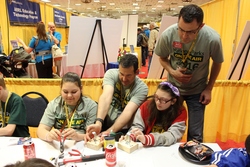
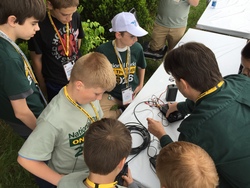
 "The Petition proposes relief that is in the nature of eliminating unnecessary regulatory underbrush, and it continues an effort started by the Commission on its own motion in 2004...to do precisely that," the ARRL said in its comments. "The rule proposed to be eliminated is outdated; it constituted overregulation when it was adopted long ago, and it now substantially limits the flexibility of Amateur Radio operators to experiment with the current generation of software-defined Amateur Radio equipment."
"The Petition proposes relief that is in the nature of eliminating unnecessary regulatory underbrush, and it continues an effort started by the Commission on its own motion in 2004...to do precisely that," the ARRL said in its comments. "The rule proposed to be eliminated is outdated; it constituted overregulation when it was adopted long ago, and it now substantially limits the flexibility of Amateur Radio operators to experiment with the current generation of software-defined Amateur Radio equipment.".jpg) Sponsored by
Sponsored by 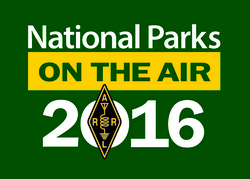
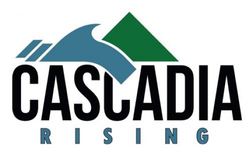 "Along with participation via Winlink and HF voice, we will use it as an opportunity to exercise the ARRL Headquarters Emergency Response Team," Corey said. "This team is called up to support the ARRL Field Organization during a major disaster, when support cannot be provided during normal business hours. The last activation of the team was during hurricane Irene in 2011."
"Along with participation via Winlink and HF voice, we will use it as an opportunity to exercise the ARRL Headquarters Emergency Response Team," Corey said. "This team is called up to support the ARRL Field Organization during a major disaster, when support cannot be provided during normal business hours. The last activation of the team was during hurricane Irene in 2011." "The purpose of this event is to test Amateur Radio Station equipment, antennas, and computers prior to this year's Hurricane Season, which starts June 1 and runs through November 30," said WX4NHC Amateur Radio Assistant Coordinator Julio Ripoll, WD4R. "This event is good practice for ham radio operators worldwide as well as National Weather Service (NWS) staff to become familiar with Amateur Radio communication available during times of severe weather." The station also takes advantage of the test to perform operator training.
"The purpose of this event is to test Amateur Radio Station equipment, antennas, and computers prior to this year's Hurricane Season, which starts June 1 and runs through November 30," said WX4NHC Amateur Radio Assistant Coordinator Julio Ripoll, WD4R. "This event is good practice for ham radio operators worldwide as well as National Weather Service (NWS) staff to become familiar with Amateur Radio communication available during times of severe weather." The station also takes advantage of the test to perform operator training.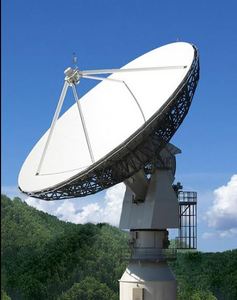
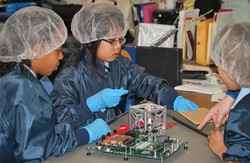
.jpg) The exam question-and-answer key is built from the latest Amateur Extra class question pool, which goes into effect on July 1, 2016. Expert instruction will lead you through all of the knowledge you need to pass the 50-question exam -- rules, specific operating skills, and more advanced electronics theory. You can use the Extra Class License Manual in conjunction with
The exam question-and-answer key is built from the latest Amateur Extra class question pool, which goes into effect on July 1, 2016. Expert instruction will lead you through all of the knowledge you need to pass the 50-question exam -- rules, specific operating skills, and more advanced electronics theory. You can use the Extra Class License Manual in conjunction with 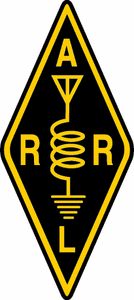 Martin is currently ARRL Emergency Coordinator for Jefferson County. He's been licensed for more than 20 years. Martin serves as the Director of Emergency Management and Facilities at UAB Hospital. He is a founding member and President of the Healthcare Community Amateur Radio Club. Martin will begin an 18-month term on July 1, rather than the nominal 2 years, because no candidates were nominated by the September 4, 2015, deadline, and nominations were resolicited.
Martin is currently ARRL Emergency Coordinator for Jefferson County. He's been licensed for more than 20 years. Martin serves as the Director of Emergency Management and Facilities at UAB Hospital. He is a founding member and President of the Healthcare Community Amateur Radio Club. Martin will begin an 18-month term on July 1, rather than the nominal 2 years, because no candidates were nominated by the September 4, 2015, deadline, and nominations were resolicited.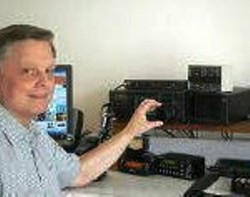 "He was a superb teacher in the high school, a wonderful mentor, licensed over 700 hams, an active member of Candlewood Amateur Radio Association, and one who really understood what it meant to actualize his potential," said ARRL Connecticut SM Betsey Doane, K1EIC. "He was enthused about life and, really, he was a gift to all of us."
"He was a superb teacher in the high school, a wonderful mentor, licensed over 700 hams, an active member of Candlewood Amateur Radio Association, and one who really understood what it meant to actualize his potential," said ARRL Connecticut SM Betsey Doane, K1EIC. "He was enthused about life and, really, he was a gift to all of us.".jpg) Hamvention 2016 Post-Show "Satisfaction Survey" Under Way: Was
Hamvention 2016 Post-Show "Satisfaction Survey" Under Way: Was .jpg) DX Engineering Announces New Acquisitions:
DX Engineering Announces New Acquisitions: 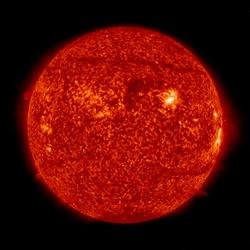 The latest forecast from NOAA/USAF shows solar flux at 95, 90, and 85 on May 26-28; 90 on May 29-30; 85, 95, 90, and 95 on May 31-June 3; 90 on June 4-7; 95 on June 8; 100 on June 9-10; 95 on June 11-12; 90 on June 13-16; 85 on June 17-20; 90 on June 21-25 (except 85 on June 23), and 95 on June 26-30.
The latest forecast from NOAA/USAF shows solar flux at 95, 90, and 85 on May 26-28; 90 on May 29-30; 85, 95, 90, and 95 on May 31-June 3; 90 on June 4-7; 95 on June 8; 100 on June 9-10; 95 on June 11-12; 90 on June 13-16; 85 on June 17-20; 90 on June 21-25 (except 85 on June 23), and 95 on June 26-30.








